Rabbinic Reflection: Rabbi Yael Splansky
On the Occasion of Rabbi Marmur’s First Yahrtzeit
Shalom from Jerusalem! I’m lucky enough to be studying here at the Hartman Institute for two weeks. I’ll have more to say about this four-year Rabbinic Fellowship when I graduate next week, but today I want to call attention to Moreinu HaRav, our Rabbi and Teacher, Rabbi Dow Marmur, of blessed memory. Today, the 18th Day of Tammuz brings us full circle to complete a year since he was lovingly laid to rest in the hills of Jerusalem.
I visited with three generations of Marmurs yesterday in Fredzia’s apartment. She continues to be simultaneously strong and gentle, as she always has been. Tomorrow I’ll go for Shabbat Morning services at Kol HaNeshamah, where Rabbi-Professor Michael Marmur will give the sermon in his father’s memory and the Kiddush-lunch will be for congregants to remember Dow together.
Rabbi Marmur was a proud Reform Jew, who devoted himself to the entirety of the Jewish People. Rabbi Marmur was a proud Zionist, who could make a home for himself just about anywhere. (If you’d like a gift copy of his fascinating memoir, Six Lives, which reflects on his life in six countries, just call the Temple office.) He could teach a single verse of text in light of its greater context. He could observe a single event in light of all of Jewish history. He called our attention to the forest and the individual trees.
De-mo-crat-ia!
When I attended a spontaneous demonstration in Jerusalem this week, I couldn’t help but wonder what Rabbi Marmur would have to say about what I witnessed there. How would he interpret the array of t-shirt slogans and flags? Would he see the scene as glorious evidence of Israel’s strength? Or as worrisome evidence of Israel’s vulnerability?
Every Saturday evening for six months, hundreds of thousands of Israelis have been demonstrating for Israel’s democracy. But this was Wednesday evening. Why? The Chief of Police of Tel Aviv was forced to resign because he was not being tough enough on the demonstrators.
That night began the 17th of Tammuz when we commemorate how the walls of Jerusalem were breached two thousand years ago. No one referenced it through the chants over the megaphones, but it was in the air. This day is a delicate day, as it has been throughout Jewish time. According to the Mishnah (Taanit 4:6), the 17th of Tammuz marks a series of calamities, of breakages, and ruptures in Jewish history — the burning of a Torah scroll in public by Apostemos, the placement of an idol in the Temple, the banning of the daily sacrifice by the Roman authorities, and the shattering of the two stone tablets by Moses.
 Two Stones
Two Stones
With effort, stones can be broken. With effort, stones can also mend what has been broken.
I picked up these two stones from the new National Library of Israel, a place Rabbi Marmur would have loved, and asked one of my classmates, who is also a sofer (a scribe) to write “Pirchei Kodesh” on them. One of the stones will come home with me. One of them will be set at Rabbi Marmur’s grave by his family, so they can feel the presence of all of us, the congregation he served and led so well for so many years.
May Rabbi Marmur’s memory continue to be a blessing for all who learned from him and for all who were cared for by him. To revisit the extraordinary study and remembrances we enjoyed last Selichot in Rabbi Marmur’s honour, click here.
Shabbat Shalom from Yerushalayim, City of Peace.





Leave a Reply
Want to join the discussion?Feel free to contribute!